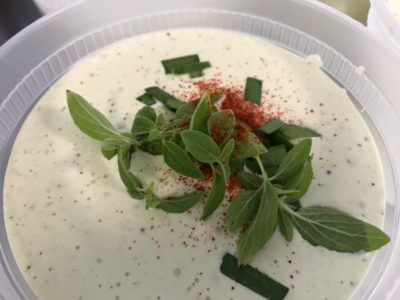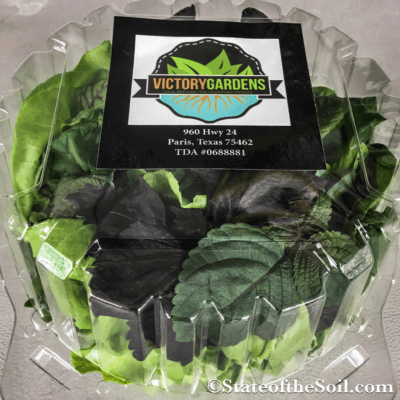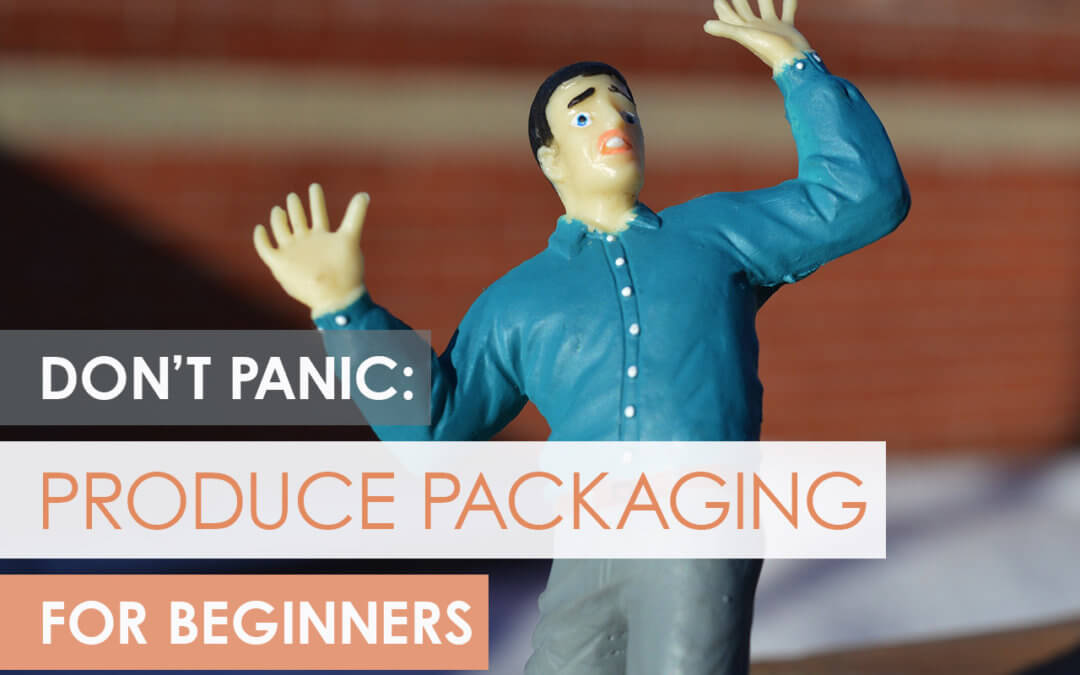Worried about your produce packaging?
If you spend time in Facebook groups for any method of farming, you will see questions about packaging on a regular basis. When people show their farmer’s market set up, deliveries, CSA boxes, or restaurant harvests; you immediately get the question, “Where did you get your packaging?“
Packaging can be a big hazy spot for farmers, but the panic might not be necessary. As someone who knows exactly what it’s like to sit on the verge of going all in on a farm, I know how every detail races through your head. I worried about packaging, labels, and branding too.
As someone who gets to speak both in person and through virtual events to many new farmers, I now have the perspective on how to deal with packaging.
Here are a few things to ask yourself before you hit the Packaging Panic Button.
1. Are you even ready for packaging?
2. How do your future clients want to buy?
3. What’s your target quantity, delivery method, storage, etc.?

8 oz packaging for dressings, vinaigrettes, pesto, side salads, hummus, and seasonal specials.
Are you ready for packaging?
If you haven’t bought land, decided on a growing method, bought a system, or decided crops and varieties, then it is not the time to waste brain power on the packaging decision.
A lot goes into the decision. Your crop and variety, market’s needs and demands, climate, and ability will affect your end product and in turn your packaging.
With such a complicated decision, lines of thought can get messy fast. Pretty soon you’ll be wondering: If you mono-crop how many sizes of boxes will you need? What about liners? Labels? Will you need palletizing equipment for wholesale distribution? Should this be automated? Do you need a reefer truck now? Should I get a CDL? What’s that going to cost in insurance?!?!
Stop, calm the flip down, and ask yourself:
Who is your client and how do they want to buy?
Until you have begun market research, you are spinning your packaging wheels. Through the market discovery, you will be told what packages to start putting out for bid. Yes, you will have to do research on price, minimum quantities must be purchased, and shipping charges. Here are a few other things to plan out.
Quantity
What can they consume in a week if you are at farmer’s markets? You want packages that are consumable within that week because it gives them the opportunity to reorder from you every week.
Client preference
Does the restaurant you want to sell to have limited dumpster space? Do they want plastic crates or cardboard boxes? (What do you mean you haven’t talked to a restaurant yet? You should have talked to your client by this point – if not, get out there and get face time before you do anything else.)
Client size
Say you are building a 10’x20′ greenhouse in your back yard and want to get into your local grocery store chain. If the produce manager tells you they need a guarantee of 10x what you could ever grow with no room for compromise, they’re probably a client for a few years down the road.
Delivery and storage
You might want to ask what size of trucks will be delivering your new packages. If you are buying pallets, do you need space, racks, or pallet jacks to store the bulk? Is the temperature controlled, so your thousands of dollars of new shiny packages don’t warp in the heat of a barn or warehouse?
I can just about assure you two facts.1) You won’t need pallets your first few months and 2) you will change the size, style, and source of you packaging at least once during your product development and pivots bringing that product to your end user.
Packaging tips for farm start-ups
Over the years, I’ve learned a lot through selling produce and helping others do the same. Here are some of the lessons that have saved time, stress, and resulted in better client management.
- In the beginning, ask for samples from these packaging vendors.
- Buy as little as you need until you have tested with your process, workflow, and client feedback.
- The cheapest option isn’t necessarily in your best interest.
- Neither is the most expensive.
- There is something to be said for simplicity.
- Multi-use packaging will save you both time and cash in the long run. (I’m down to 4 containers)
- Developing a relationship with a salesperson who has been with a company for a good length of time who gives a damn about you and your farm will be worth a few pennies here and there. Universal vendor tip right here.
- Make sure you are buying packaging that is pretty standard and not in danger of becoming discontinued.
- Ask what happens when (and you will) get a box in that is damaged or has quality issues.
- What payment terms can be issued? (Never forget to ask about additional shipping charges.)
- Make sure both the COST and SHIPPING are plugged into your final price point.
- Ask about how your package will arrive. Fed Ex and UPS is one thing, but an 18 Wheeler down your muddy driveway is another.
- Can the trucks turn around and unload efficiently?
- Ask when the next price break takes place, consider the extra expense up front if you can save significantly and you are making faster turns.
- Use your network. Can you do a split order with another farmer?
- What are the lead times you will be dealing with? Do not run out of packaging!
- Make sure when packing into your transport boxes a good amount fits inside securely without wiggle room.
- Test your market as much as possible. Take those samples to a small group of people within your ideal client avatar. Ask their opinion, concerns, and first impressions. Is the packaging easy to use? Can your clients open and close them easily and securely?
- Make sure that your labels adhere quickly and securely to the packaging.

Living Head Clamshell. Multi-use packaging.
Read more
For a list of ten packaging resources click this link. The first two I use. The rest are ones I looked into. I am not affiliated with any of these on the list. Do your due diligence when selecting a vendor.
For more Farm Marketing resources, please visit http://stateofthesoil.com.

The owner of multiple companies, public speaker, and coach of hydroponic & farm to market agricultural operations. With 20 years in the green industry, we have the experience, resources, and connections to bring your farm to the next level of profit and sustainable operation.



Thank you!
It would be also nice to get information and tips on Harvesting/Packing/Storing best practices.
Check out these tips: https://blog.brightagrotech.com/10-tips-for-farmers-on-the-post-harvest-care-of-herbs And if you want even more info, I recommend this eBook for $4: https://university.upstartfarmers.com/product/small-farmers-guide-post-harvest-care